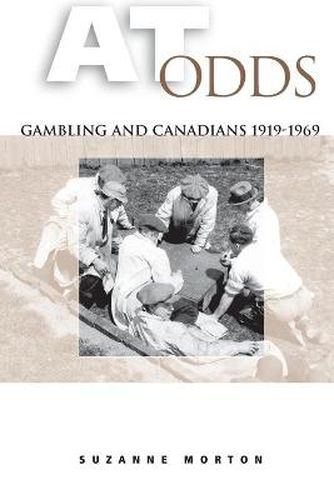Readings Newsletter
Become a Readings Member to make your shopping experience even easier.
Sign in or sign up for free!
You’re not far away from qualifying for FREE standard shipping within Australia
You’ve qualified for FREE standard shipping within Australia
The cart is loading…






Using a variety of historical sources, Suzanne Morton traces the history of gambling regulation in five Canadian provinces - Nova Scotia, Quebec, Ontario, Manitoba and British Columbia - from World War I to the federal legalization in 1969. This regulatory legislation, designed to control gambling, ended a long period of paradox and pretence during which gambling was common, but still illegal. Morton shows the relationship between gambling and the wider social mores of the time, as evinced by labour, governance, and the regulation of vice . Her focus on the ways in which race, class and gender structured the meaning of gambling underpins and illuminates the historical data she presents. She shows, for example, as Old Canada (the Protestant, Anglo-Celtic establishment) declined in influence, gambling took on a less deviant connotation - a process that continued as charity became secularized and gambling became a lucrative fundraising activity eventually linked to the welfare state. This is a historical examination of gambling, a complex topic which is still met by moral ambivalence, legal proscription, and volatile opinion. The study should be of interest to the undergraduate history or social science student, but will also hold the attention of a more general reader.
$9.00 standard shipping within Australia
FREE standard shipping within Australia for orders over $100.00
Express & International shipping calculated at checkout
Using a variety of historical sources, Suzanne Morton traces the history of gambling regulation in five Canadian provinces - Nova Scotia, Quebec, Ontario, Manitoba and British Columbia - from World War I to the federal legalization in 1969. This regulatory legislation, designed to control gambling, ended a long period of paradox and pretence during which gambling was common, but still illegal. Morton shows the relationship between gambling and the wider social mores of the time, as evinced by labour, governance, and the regulation of vice . Her focus on the ways in which race, class and gender structured the meaning of gambling underpins and illuminates the historical data she presents. She shows, for example, as Old Canada (the Protestant, Anglo-Celtic establishment) declined in influence, gambling took on a less deviant connotation - a process that continued as charity became secularized and gambling became a lucrative fundraising activity eventually linked to the welfare state. This is a historical examination of gambling, a complex topic which is still met by moral ambivalence, legal proscription, and volatile opinion. The study should be of interest to the undergraduate history or social science student, but will also hold the attention of a more general reader.